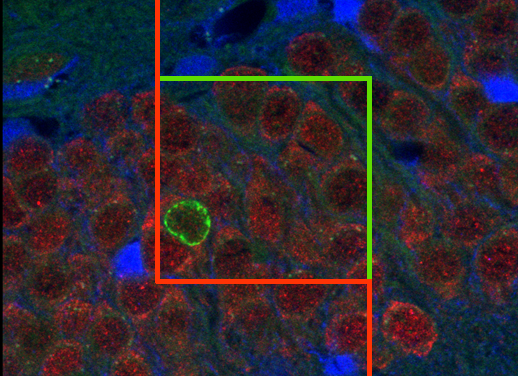
Scientists Use Stereo Investigator in Spinal Cord Injury Study
After an initial spinal cord injury, a cascading series of secondary events continues to do damage to the nervous system. One particularly damaging event is the death of oligodendrocytes—neuroglial cells that help protect and support the central nervous system. Scientists are learning more about the mechanisms involved in this process in the hope that their research may lead to the development of new therapeutic treatments for stopping some of the secondary damage before it occurs.
Researchers at the Miami Project to Cure Paralysis previously found that astrocytes play a role in oligodendrocyte death after spinal cord injury, but they weren’t quite sure how. Their new study identifies a culprit – an enzyme called NADPH oxidase. According to their paper, published in PLOS One, astrocytes activate NADPH oxidase within oligodendrocytes after an injury, triggering a toxic effect in the tiny neural cells.
In their study, the researchers set out to see what would happen if they could prevent post-trauma NADPH oxidase activation. Their results proved promising, with both in vitro and in vivo experiments resulting in lower oligodendrocyte death.
During the course of their experiment, the scientists treated mice with spinal cord injuries with Apocynin, an NADPH oxidase inhibitor, one hour after injury, and each following day for a week. They removed the spinal cords, immunostained them with a nuclear oligodendrocyte marker and a cell death marker, and using Stereo Investigator, the researchers quantified cells labeled with both markers. Their stereological count revealed seventy-five percent less cell death in Apocynin treated animals compared to controls.
In vitro experiments showed a similar pattern. When a culture of oligodendrocytes was pre-treated with Apocynin and then combined with injured astrocytes, the oligodendrocytes were significantly protected from cytotoxicity compared to a control culture where Apocynin was not introduced.
Though Apocynin treatment alone did not show significant benefits to locomotor behavior, the scientists explain that additional tests combining a dual treatment of Apocynin and an AMPA receptor inhibitor did improve locomotor behavior and preserved descending axon fibers following spinal cord injury.
“These studies lead to a better understanding of oligodendrocyte death after trauma and identify potential therapeutic targets in disorders involving demyelination and oligodendrocyte death,” the authors say in their paper.
Johnstone, J. T., Morton, P. D., Jayakumar, A. R., Johnstone, A. L., Gao, H., Bracchi-Ricard, V., Pearse, D.D., Norenberg, M.D., Bethea, J. R. (2013). Inhibition of NADPH Oxidase Activation in Oligodendrocytes Reduces Cytotoxicity Following Trauma. Plos one, 8(11), e80975. doi: 10.1371/journal.pone.0080975.



